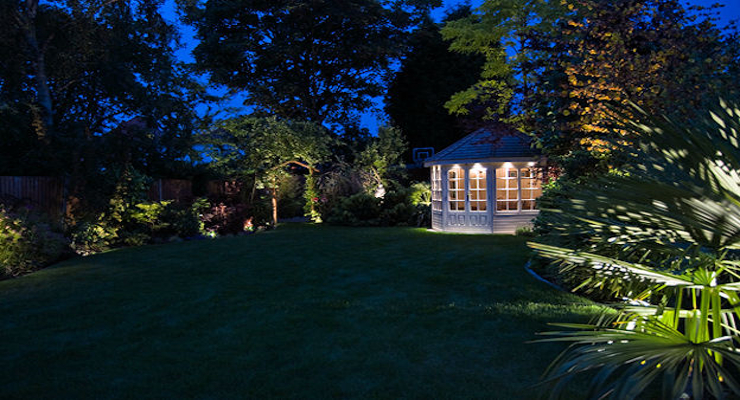The use of solar energy to create beautiful and decorative solar garden lights has now grown to the extent that an individual can successfully plan and design a huge garden area that was previously impossible to light and maintain affordably. The use of solar lights is no longer limited to individual pathway lights that do not provide enough power to create dynamic focal points in the yard.
Wiring a large yard with landscape lighting is often cost prohibitive and does not allow an individual to modify or alter their original lay-out without investing further in junction and power boxes. Changing designs, lighting, etc., is time-consuming and difficult to accomplish. However, with the advent of multiple solar options, it is now possible to move, add, alter, or adjust solar lights throughout the garden with minimal planning and effort.
Choosing landscape lighting for a large garden will require planning of the initial lay-out of the garden and calculating the type of solar energy that will be most effective for the yard. Some of the pathway lighting may be effectively installed using smaller solar lights that are independently controlled. However, adding enhancing up and low lights in the far corners of a yard may require a bit of organization and a different type of solar panel or control center.
The options available in solar pathway lighting have changed dramatically over the last few years. It is now possible to have both decorative and functional solar lighting that can create either a soft glow or clearly visible direct lighting with the flip of a switch. Many people add tall lamp posts that match the pathway lighting to areas of the garden that will contain benches, fountains, or other dramatic features.
One option is to have all of the lighting powered by a single solar panel that is placed discreetly in a corner of the garden. This allows for unique placement of lighting in areas that would not normally be able to provide energy due to shade or cover. Wiring (similar to electrical wiring) runs from the main solar control panel to the primary light. When using a combination of independent solar controlled lighting and a solar control panel, it will be necessary to research the details for successful integration of these two types of systems.
In most cases, the larger control panel will be used for lights and lamps that will be required to provide more direct lighting for individuals spending time in the garden. These lights often run through specific quadrants of the garden which enables movement of lighting more effectively.
Talking to professionals who have experience in the layout and design of solar landscape lighting systems in yards will be very helpful. They will be able to give you information and details on the solar garden lights that will be most effective and functional in the space you are designing. In addition, there will be some issues that may be unique to your garden area that will need to be addressed prior to installing the lighting.
I always recommend first sketching out the layout, taking pictures of the area in different lighting conditions, and coming up with a solid plan before you start with even your first light. There are literally hundreds of combinations that you can use to create almost any effect. Good luck and have fun with your new solar garden!
*Thanks to The Light Garden for the use of their image in this article.

Leave a Reply